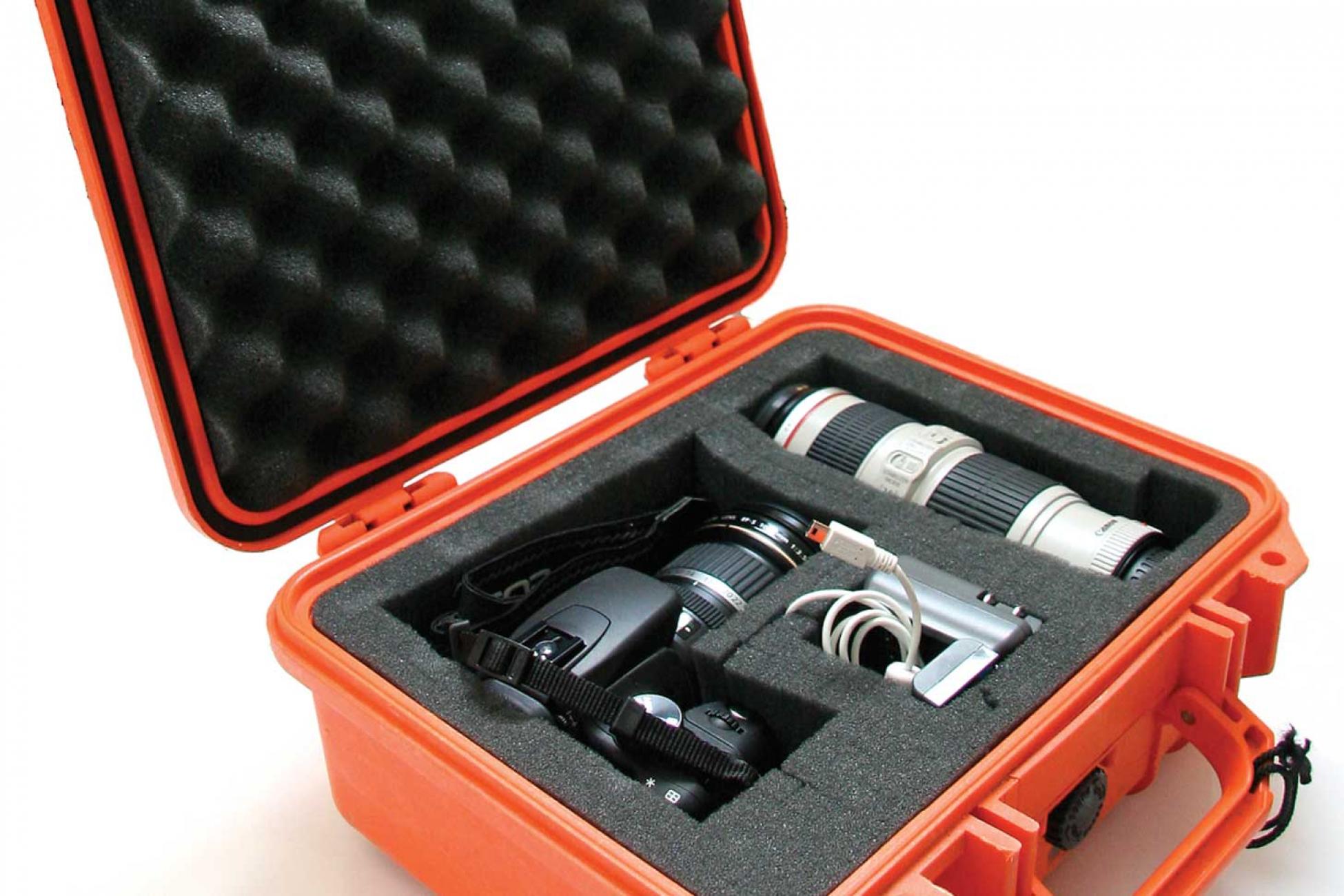The view from the ground below must have been quite a scene to behold. A baggage handler is completing the laborious task of loading luggage onto a commercial flight. Frustrated that the conveyor belt is not moving things along fast enough, he begins to take matters into his own hands. Grabbing the next bag in the pile, he hurls it into the air. It hits the top of the conveyor belt and cartwheels to the ground. Frustration growing, he attempts this again and fails. Over and over he tosses the bag at the plane. Each time with the same result, it crashes down on the pavement below. Several feet above his head, a horrified face is pressed against a window. Hands are pounding the glass—begging and pleading for him to stop. The silent screams go unanswered.
As you may have guessed, that was me in the window, and it was my bag tumbling to the ground repeatedly. The contents of the case? My lighting equipment. I was travelling across the country to shoot a job for a client. Photography is my profession and I often have to travel on location for work. While this scene has never been repeated (to my knowledge), I have had several similarly eye-opening experiences while travelling.
If you are backpacking overseas, you will hopefully have less equipment to worry about. As you pack for your once in a lifetime trip, think about what you are going to shoot. The subject matter, type of travel, and weather conditions will affect the contents of your camera bag quite a bit.
First you need to decide how to carry your camera. I’ve spent many hours researching equipment bags over the years. No one solution is best. Think about the type of activities you will be doing, how comfortable you would like to be, and how well you need to protect your equipment. I have a small backpack for trips that involve long days walking around the city. I have a larger waterproof backpack that I use when I hike or spend time on the water. Hard waterproof cases, such as those made by Pelican, are great for adverse conditions. They come in a variety of sizes including small versions for compact cameras. Depending on the trip, I may use either bag or bring a second bag in my checked luggage.
Power is also a concern. Pack extra batteries, and don’t forget the appropriate cords for rechargeable batteries, along with any necessary voltage converters and plug adapters.
A lightweight tripod can be handy for long exposures and night photography. Even a small tabletop tripod or beanbag will be useful, if you want to keep the weight to a minimum.
The main difference between a working professional and an advanced amateur is that the pros have just been doing this longer. Pros have made the mistakes before and, hopefully, learned from them.
I have locks on bags for when I leave them in hotel rooms or hostels' checked luggage facilities. Often I use a bike-lock type cable to secure my bag to the nearest immovable object. Better yet, take your camera with you when you go to dinner if possible (depending on where you are going, of course!) I have a good friend who uses a locking carabiner to attach his bag to things nearby when may not be not 100 percent focused on watching his camera. Attaching your bag to a table leg while eating lunch in a busy diner, for example, is a good idea.
I’m notoriously late for things. The airport is the exception. I give myself plenty of time to check in and get through security. Bags full of electronics are almost always inspected at security checkpoints. I know it’s coming, I’m not rushed, and I emerge unstressed on the other end. A hand inspection usually involves a quick look in the bag and a swab to determine if the case came in contact with anything questionable. Some films can be affected by x-ray machines, so ask for those to be inspected by hand as well.
I always pack my camera in my carry-on luggage. Airlines and airports have become much more strict about the size and weight of carry-on luggage in recent years. So bring only what you absolutely need. Your cable or extra battery can be packed in the checked baggage. Alcohol-based cleaning fluids for cameras and lenses will not be permitted on flights so pack these in your checked baggage as well.
If I travel outside the country, I pre-register my equipment with Canada Border Services. This is a relatively simple procedure that documents that I brought the equipment with me, and did not acquire it out of the country. If you have any expensive camera equipment, this will ease your return to Canada when you re-import the “goods.”
On a recent trip to the Arctic with a group of students, I was very surprised at how many people ran out of film and/or memory card space early in the trip. You will probably take more photos than you ever have in your life, so make sure you have plenty of room to record your experience. Buying extra film or memory cards while travelling may not be an option, or may be quite expensive.
The images I produce during a trip earn me a living, and they are in many cases irreplaceable. Your shots of your once-in-a-lifetime trip will probably be equally invaluable to you. So, back them up. I shoot digitally and I carry an Epson battery-powered hard drive with me. It has a built-in card reader and a LCD screen for viewing images. I download my memory cards from my camera as I go. Having a backup of everything may sound like a lot of work, but if anything went missing, re-shooting would be a heck of a lot more work. The memory cards and hard drive can be packed separately, so if one bag goes missing not all is lost. This complete archive of images always travels with me on the flight home.
Most of my peers have variations of the same basic principles for emerging unscathed on the other end of a location shoot. Many have their share of horror stories as well. As scary as the flying equipment case story sounded, I did have the foresight to pack the equipment really well inside the case. Upon arrival, the lights were a little banged up but still worked perfectly!
Trevor’s Top Tips for Travelling with your Photography Equipment
1. Always plan what you’re going to shoot; think about the weather, subject and type of travel involved in your journey and pack your camera bag accordingly. Do consider the type of camera bag you’re bringing as well. For example, if you’re travelling through adverse conditions, use a hard waterproof case.
2. Pack extra batteries and any cords needed for rechargeable batteries. Remember to check what type of outlet they use at your destination in order to purchase an electrical adapter if needed.
3. Pack your camera in your carry-on bag, and extras (like extra batteries and cables) can go in your checked luggage. Any liquid cleaning fluids must be packed in your checked luggage.
4. Leave yourself plenty of time at the airport. If you have photography equipment with you, expect to be searched—so leave enough time for it.
5. Make sure you have plenty of memory space (or film); as a backup, consider bringing a battery-powered hard drive.
6. Keep your camera with you at all times when travelling. When that’s not possible, purchase a lock to secure it to an immovable object in your hotel room (or hostel left luggage facility) or your table leg when out to dinner.
7. If you’re travelling with lots of equipment, consider pre-registering it with Canada Border Services in order to make your return to Canada easier.
Add this article to your reading list



